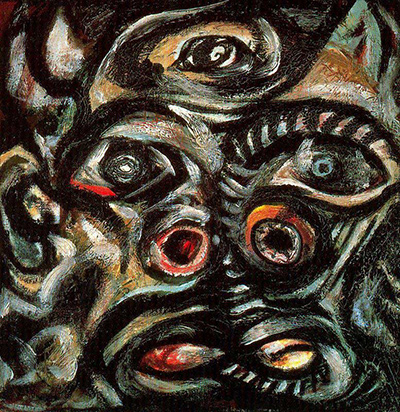This artwork underlines the impact of Pablo Picasso in Pollock's career Pablo Picasso, and the influence the Spanish master painter had on a young Jackson Pollock is clearly evident in Pollock's painting titled simply Head, which he painted sometime between 1938 and 1941 when he was in his late twenties.
Pollock's wife and archivist Lee Krasner would often claim that during the early 1940s Pollock overtly expressed a desire to fashion himself into what he himself described as a "parallel version of Pablo Picasso".
Pollock's earliest exposure to the art of Pablo Picasso would have been in the 1920s while he was still in high school. Jackson Pollock attended Manual Arts High School in Los Angeles, where the head of the art department was Frank Schwankovsky.
Himself a painter of certain notoriety, Schwankovsky was a colorful character with many eccentric ideals— he was a very active member of the American Communist Party and followed the teachings of the Russian occultist Helena Blavatsky.
It was Schwankovsky who first introduced Jackson Pollock to the then extremely iconoclastic works of Pablo Picasso.
A reoccurring central character in Picasso's painting is the Minotaur, and we can clearly see this afflicted half-man half-bull in "Head" by Jackson Pollock.
Far from the pure abstraction with which Pollock would become synonymous with only a few years later in the mid nineteen forties, in this painting we can clearly see two flared nostrils in the center of the composition, above which are two startled wide open eyes.
There is a definitely a feeling of tension in this piece which is created not only by the pained expression, but also by the use of space; Pollock pushed the face tight against the picture plane, and the result is quite claustrophobic.




